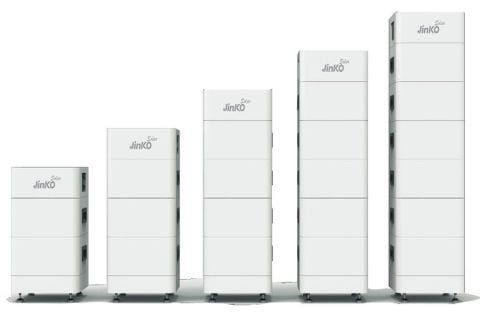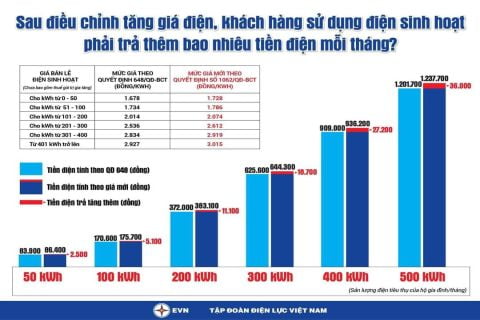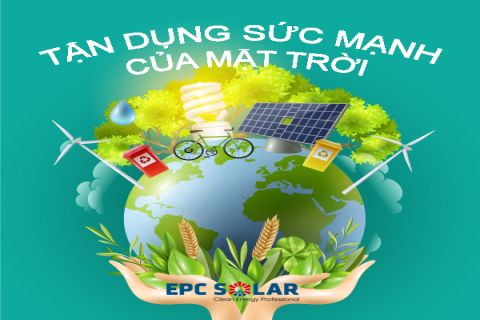-
Your shopping cart is empty!
LATEST SOLAR CELL TECHNOLOGIES IN 2023
23/03/2020,
Array
The latest solar cell technologies in 2023
With hundreds of different solar panels on the market, it can be difficult for non-industries to determine a quality panel that will last for the 25 years expected of a solar power system's life. To date, the leading solar panel manufacturers have used the latest innovations for efficient and stable solar panels with the longest lifespan and highest efficiency. Below are the solar cell technologies that have been researched and commonly used by manufacturers today.
Latest photovoltaic cell technologies
Most solar panel manufacturers offer a wide range of product lines including monocrystalline (Mono) and polycrystalline (Poly) types with different wattage ratings and warranty conditions. The efficiency of solar panels has increased dramatically over the past few years due to many advances in solar cell technology including:
- PERC - Passivated Emitter Rear Cell
-
Bifacial - Dual sided panels and cells
-
Multi Busbar - Multi ribbon and wire busbars
-
Split panels - using half cut cells
-
Shingled Cells - Overlapping cells
-
IBC - Interdigitated Back Contact cells
-
HJT - Heterojunction cells
- Dual Glass - Frameless double glass
Below is a detailed explanation of the innovations in photovoltaic cell technology that improve efficiency, reduce shading effects and increase reliability, with many manufacturers offering warranties of up to 25 year and 25-30 year performance warranty.
Solar cell technology helps Work efficiency
Hiệu suất của tấm pin mặt trời là một trong các yếu tố quan trọng cần được xem xét. Nó phụ thuộc vào loại tế bào quang điện và cấu hình tế bào. Hiệu suất trung bình của tấm pin đã tăng đáng kể trong những năm gần đây từ khoảng 15% đến gần 20%, nhờ vào các nhà sản xuất đã áp dụng công nghệ và cải tiến mới nhất của tế bào quang điện.
Monocrystalline and Polycrystalline Cells
There have been long-standing disagreements about the superiority of cell technology between monocrystalline and polycrystalline silicon cells. Monocrystalline cells are more efficient because they are cut from a single crystal, but they are also more expensive to manufacture. In the past, because of the higher cost, polycrystalline technology became the preferred cell type to be used. However, in the last 2 years, the cost of mono panels has decreased significantly and most manufacturers have now switched back to using mono cells.
Polycrystalline cells are usually made from a piece of silicon made up of many crystals. As a result, it is cheaper to manufacture but provides slightly lower efficiency than monocrystalline. Poly cells are still widely used and very reliable, but as explained above, monocrystalline cells are considered superior due to their higher efficiency and optimized manufacturing costs.
Cast mono cells
Cast monocrystalline cells are made using the same casting manufacturing process as polycrystalline cells. The low-energy molding process reduces the cost of producing single cells, however cast monocrystalline cells are not quite as efficient as conventional monocrystalline cells. Monocrystalline cells have been around for a while but have only recently been adopted by some major panel manufacturers such as JINKO Solar, GCL & Canadian Solar.
Why is monocrystalline solar cell technology more efficient?
The inherent benefits of monocrystalline silicon are due to the uniform crystal structure with no crystal boundaries and lower impurities through the unique czochralski manufacturing process. Mono cells have a lower light-induced attenuation (LID) rate and also a slightly better temperature coefficient as explained in more detail below. In comparison, polycrystalline cells with very small but well-defined crystal boundaries can act as a barrier and reduce efficiency.
High temperature performance
Monocrystalline cells (Mono) have a lower cell temperature coefficient, resulting in higher efficiency at high temperatures. The power temperature coefficient is the amount of power loss as the battery cell temperature increases. All cells and solar panels are rated using standard test conditions (STC - measured at 25°C) and slowly reduce power output as the cell temperature increases. In general, the cell temperature is 20 to 35 degrees Celsius higher than the ambient air temperature, which equates to an 8-14% reduction in power capacity.
Monocrystalline cells have a lower mean temperature loss (or loss) averaging around -0.38% per °C while polycrystalline cells are slightly higher at -0, 41% per °C. The monocrystalline IBC cells described in more detail below have a much lower temperature coefficient of -0.30% per °C. By far the best performing cells. at high temperature are the HJC cells from Panasonic that we describe in the last part of this article.
PERC - Passivated Cells
Over the past two years, PERC has emerged as the preferred technology of many manufacturers in both monocrystalline and polycrystalline cells. PERC stands for 'Passive Emitter and Rear Cell', which is a more advanced cell structure that uses additional layers at the back of the cell to absorb more photons of light. brighter and increased quantum efficiency. A common PERC technology is local Al-BSF (aluminum back panel) (see diagram below). However, several other modifications have been developed such as PERT (Fully Diffuse Passive Radiation Backside) and PERL (Passive Radiation and Locally Diffuse Back Side). Director of the Australian Center for Advanced Photovoltaics at UNSW, Professor Martin Green invented the PERC concept which is now widely used by many of the world's leading solar producers.
Q-cells were the first manufacturers to incorporate PERC technology into mulitcrystalline cells but use the Q.antum name for their range of PERC modules. Jinko Solar recently broke a solar panel efficiency record with 22.04% recorded from a standard size polycrystalline P-type silicon cell. Mono PERC cells are currently the most popular and efficient cell type with most manufacturers including Jinko Solar, Trina Solar, Q-cell, LONGi Solar, Risen and JA Solar all using PERC cell structure .
Multiple / Wire Busbars
Busbars are thin metal wires or tapes that run down each battery cell and conduct electrons to the external circuit to form an electric current. As PV cells become more efficient, they generate more and more current, and in recent years most manufacturers have switched from 3 Busbars to 5 or 6 Busbars (abbreviated: 3BB, 5BB). ,6BB). Some manufacturers like LG Energy, REC, Trina and Canadian Solar have gone a step further and developed multiple busbars (MBB) systems that use up to 12 or 16 very thin round wires instead of flat Busbars. The problem with traditional flat Wire Busbars is that they cover part of the cell which partially reduces performance. On the other hand, more round wire busbars give lower resistance and shorter paths for electrons to travel along the fingers, resulting in higher efficiency.
If cracks in the battery cell are caused by an impact, heavy load, or pedestrians on the panel face, multiple busbars help reduce the chances of the cracks developing into hot spots as they provide alternative paths. potential for electric current.
Split Panels
A recent improvement is to use half-cut cells (Hafl-cut cells use the traditional method of cutting cells to two equal parts via laser) instead of traditional battery cells and move the junction box to the middle of the battery plate. It divides the solar panel into 2 smaller panels with 50% capacity on each panel and works in parallel with each other. This has a lot of benefits such as increased performance due to the loss of resistance across lower busbars. Since each Half-cut cell, it produces half the current at the same voltage, which makes the width of the busbar halved and thereby reduces the shading and loss of the battery cell. The lower current also results in lower cell cell temperatures, thereby reducing the risk and effect of hot spots due to partial shading, dirt or cell cracks. the battery.
In addition, the shorter distance to conduct current to the junction box at the center of the solar panel improves the overall efficiency allowing to increase the output of a similar sized solar panel up to 20W. Another benefit is that it allows partial shading on the top or bottom of the panel without affecting the total output power of the solar panel.
BiFacial Solar Modules
Bifacial (two-sided) solar technology has been available for several years but is starting to gain in popularity as the cost to produce high quality monocrystalline cells is steadily decreasing. Bifacial cells absorb light from both sides of the panel and with the same location and conditions can produce up to 27% more energy than traditional monocrystalline (Mono) panels. Bifacial solar panels typically use a glass front and a transparent polymer back panel to enclose the photovoltaic cells allowing reflected light to enter from the back of the solar panel. Bifacial modules can also use thicker glass backing which can greatly reduce the risk of damage, with some manufacturers now offering 30-year performance warranties on Bifacial panels.
Bifacial modules also absorb light energy reflected at the back of the cells
Bifacial solar panels are used only in above ground installation locations where sunlight is easily bounced off or reflected off surrounding surfaces, especially areas prone to snow and latitude harshness. Although they have been proven to perform well when installed on light sandy surfaces and can also achieve up to 10% higher output even on light colored roofs when tilted. Manufacturers that produce bidirectional solar panels include Jinko Solar, LG energy, Trina Solar and Yingli Solar.
Dual Glass Panels

Many manufacturers are now producing Dual glass solar panels with double glass and should not be confused with Bifacial technology. The back glass replaces the traditional white (plastic) backing and creates a double-glazed sandwich that is considered superior because the glass is very stable, non-reactive and does not deteriorate over time or become damaged. UV degradation. Due to the longer lifespan of tempered glass panels, some manufacturers such as Jinko solar, GCL and Trina Solar are now offering 30-year performance warranties.
Frameless Panels
Many Dual glass solar panels also do not have an aluminum frame which can make the installation of the panels more complicated as a special clamping system is required. However, frameless modules have special advantages in regards to cleaning, there is no frame to catch dirt, tilting or flat frameless modules are easier for surface cleaning and tend to use natural wind and rain for self-cleaning thereby resulting in larger and more stable solar output. However, without the strength of an aluminum frame double glazing, although more durable, it is not stiff and can bend or bow, especially when mounted flush or horizontally.
Shingled Cells
Shining Cells is a new technology that uses overlapping thin strips of cells that can be assembled horizontally or vertically on the panel. Shingled cells are made by laser cutting a normal full-size cell into 5 or 6 strips and stacking them in a shingle configuration using the back-connect glue. The thin overlap of each cell strip hides a single busbar that connects the cell bands. This unique design covers more panel surface area as it does not require the front busbar connections to partially cover the cell, thus increasing the efficiency of the panel just like the solved IBC cells. like below. Another benefit is that long Shingled Cells are often connected in parallel, which greatly reduces the shading effect with each long cell effectively acting independently. Also Shining Cells are relatively cheap to manufacture so they can be a very cost effective high performance option, especially if partial shading is an issue.
N-Type Solar Cells
While PERC and Bifacial are the researches that are gaining more and more interest, the most reliable and efficient technology is still the N-type monocrystalline cell. The first type of solar cell was developed in 1954 by the Bell's lab used N-type doped silicon wafers but over time the more cost-effective P-type silicon became the dominant cell type with over 80% of the global market in 2017 using Cell- P type. With high volume and low cost being the main driving factors behind the P type, it is expected that the N type will become more popular as production costs fall further and efficiency increases.
N-type cells with solid copper backing achieve extreme efficiency of over 22%
Interdigitated Back Contact
An IBC (Interdigitated Back Contact) photovoltaic cell is a conductor network of 30 or more conductors integrated into the rear of the cell, unlike standard battery cells which typically have 4 to 6 visible busbars. See large and many extra fingers on the front of the battery cell. The most common problem with the more common front-end busbars design is that they partially cover the cell and reflect some light photons reducing efficiency, whereas IBC cells do not have this problem.
Heterojunction - HJT Cells
Following initial HJT development work at UNSW and Sanyo, Panasonic created the efficient 'HIT' series of panels and has been a leader in HJT cell technology for many years. However, REC group has just released new Alpha series panels that use HJT cells with 16 mini busbars to achieve an impressive 21.7% efficiency. HJT solar cells use conventional crystalline silicon with additional layers of silicon thin film on either side of the cell forming a heterojunction. In contrast to conventional P-N junction cells, multilayer heterologous cells have a dramatic increase in efficiency with laboratory testing reaching efficiencies of up to 26.5% when combined with IBC technology.
EPC Solar VN





